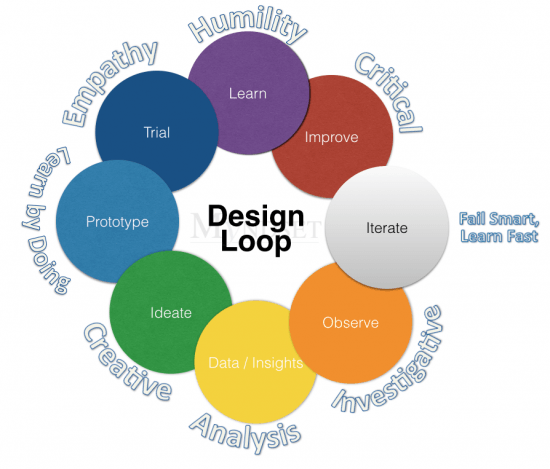In an intense discussion I had with Roy Vella, an expert in mobile, we looked at the keys to successful design. Specifically, we started by talking about the challenges in designing the customer experience. We then went on to explore the issue of design creation, itself. How does one engineer the optimal design? What’s the right design mindset? Roy said something that I found rather stirring:
Engineering is applied science; the main purpose is to realise a flawless design from a hypothesis. Scientists tend to do the opposite… that is, instead of perfection, they seek holes in the theory to further their ongoing investigation.
Why is this relevant in a discussion about customer experience?
Because many of today’s senior managers and CEOs were schooled as engineers, the approach to design is often bassackwards. Creating a flawless bridge is absolutely vital. Engineering a perfect customer experience, on the other hand, is an organic process that, by its nature, will involve imperfections (after all, we’re talking about human interaction). Fundamentally, this is why Human Resource departments of marketing-prone companies that are looking for the best talent should be weighing more heavily diplomas in sciences, human sciences and even the humanities, more broadly. To the extent we are immersed in a world of new technologies and evolving habits, any marketing team that doesn’t allow for failure and doesn’t subscribe to a test & learn approach will struggle to convert. A digital transformation process and the creation of a great customer experience require more of an investigative scientist mindset than an engineering mindset. If you wait to build the perfect bridge (to the customer), you will never get off your tush.
Scultping the design mindset
With these thoughts in mind, here is the design loop and, what I would qualify as the ideal design mindset!
Give me some skin!
Engineers and the more rational, business-schooled managers are most comfortable with numbers and data. The classic (and wrong) approach is to obsess first about the data and business logic. Roy’s advice in designing a superior customer experience: start with the user interface (the look & feel). Circling back to the beginning of this post, Roy likens the process to the structure of a body. The data is like a skeleton, the essential infrastructure. The business logic is the meat, the muscle, tendons, etc. that gives the data purpose, motion, action. Finally, the user interface is the skin, the largest, possibly most important organ that provides the primary interactive surface. It’s maybe the ultimate proof (scientifically speaking) of why we read a book by its cover?
Your thoughts and reactions are welcome!











